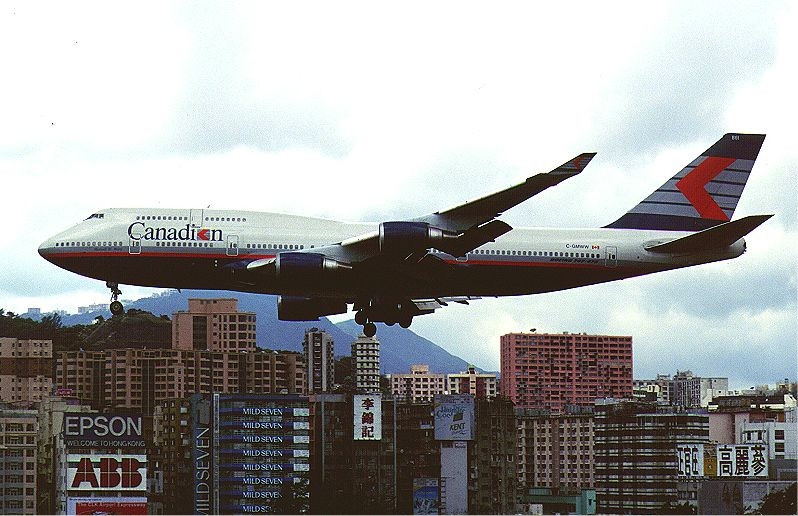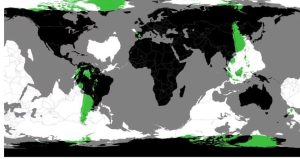It is one of the questions we get most often: why are plane tickets so expensive in Canada? They’re so expensive here that it is often cheaper to buy a ticket to Europe than to the other side of our own country. And while $20 plane tickets are common in many countries, they aren’t here. Is this an illusion? No, it’s true: Canada is downright one of the worst countries in the world when it comes to airfares.
That happens to be why the cheap flight deals Flytrippers spots are so popular: Canadians are so used to paying a lot and clearly want to save money to explore our beautiful world!
In 2015, a study on the cost of air travel around the world ranked Canada 130th out of 138 countries.
Ouch.
It’s expensive for all destinations, but it’s especially expensive for domestic flights. Another study evaluated the average cost of domestic flights at $24 per kilometer, tanking us 65th out of the 80 countries included.
Why? There are many reasons that explain why plane tickets are more expensive in Canada than elsewhere.
Here are the 5 main ones.
1. The level of competition is low in Canada
Did you know that there is only one thing that really determines the price of a plane ticket?
Yes: how much the airline can charge for the plane ticket.
That’s it. Competition is the most important thing to get cheap plane tickets.
And there is very little competition in Canada, because there are few Canadian airlines.
This lack of competition means that there is necessarily less incentive for carriers to lower airfares. This is a fairly basic economic principle. If a company can charge a higher price, it would not be very good management not to do so… hence the high prices.
For example, in the USA, there are a dozen major American carriers and there are always many of them competing against each other on just about every direct route (and the whole dozen competes on every city-pair thanks to connections).
In Canada, there are only 2 real big players for intra-Canada flights: Air Canada and WestJet. There are some smaller players, but it’s pretty limited. Before, there was Canadian Airlines until 2001, but they were bought by Air Canada.

It’s also true internationally, with Air Canada being practically the only truly international player. The good news is that WestJet is on the way to becoming one, by transitioning to a full-service or legacy airline business model.
READ ALSO: Air Canada or WestJet? Which airline is the best?
Airlines know that people in Canada are willing to (and used to) paying more for their airline tickets.
That’s why Air Canada sells its transatlantic flights to Americans at half the price, even though the passengers will be sitting next to us on the same plane.
READ ALSO: A Detroit-Toronto-Amsterdam flight for half the price as the same Toronto-Amsterdam flight
This article is about the why, so here’s why there is little competition.
First, Canada has a very small population of course.
But more importantly, there are regulations that limit competition. Canadian laws prevent non-Canadian investors from owning majority stakes in airlines or starting new ones, which limits the financial resources available to airlines — current or future.
Until fairly recently, foreign financing of Canadian airlines was limited to 25%, which was very restrictive for a country that, overall, does not have such a large capital market. The government has recently increased this to 49%, which is already a very good start.
We will soon have an article with a presentation of all the airlines in Canada.
2. Ultra Low-Cost Carriers are just getting started in Canada
Ultra Low-Cost Carriers (ULCCs) are the greatest thing to have happened to the commercial aviation industry, as this business model has drastically driven down prices everywhere in the world where it has been launched.
Overall, plane tickets have never been cheaper in all of history. That’s thanks to ULCCs.
That’s why many people do as we do and use American airports near the border to find flights at US$28 roundtrip to Florida. We have often bought tickets for US$14 in the US, €10 in Europe, and very low prices in many other regions.
These prices include all taxes and fees by the way, as is always the case for all airfare prices listed on Flytrippers.
Until fairly recently, Canada was one of the only developed countries that did not have a ULCC at all. There are now 2: Flair and Swoop.

(Well, there was also another one that was pretending—and that was sure to be launched soon according to many media outlets who are not all quite travel experts—but as we told you from the beginning, it was not credible at all).
However, ULCCs in Canada are still very small, so we still have to be a little patient (and support them so they can expand and make airfares even cheaper).
Also, ULCC prices in Canada will not be as low as everywhere else in the world, for all the reasons mentioned in this article (but most importantly because of reason #3 below). So we can’t expect to regularly have $20 flights here like elsewhere (although Swoop has sold tickets for $9 total from one particular airport)…
But flights are often around $40 or $50 (of course, we spot them all on our cheap flight deals page).
This is already a lot better than before, even if it is often twice as much as in other countries.
ULCCs’ business model is to offer the lowest possible prices and give the option to those who want to travel for less to do so with the bare minimum: a seat (which you can’t choose) and a small backpack.
But they are good for all travelers, even those who don’t want to travel enough to make choices accordingly (and don’t want to take ULCCs).
It’s that ULCCs drive down prices for all other carriers, too. When Flair launched its Montreal-Vancouver route for just $120 roundtrip, magically Air Canada flights dropped from $400 to $200 roundtrip.
(That’s what we said in point #1 above: did it suddenly cost Air Canada less to operate this flight? Of course not: competition is the key).
In short, Canada finally has ULCCs so that can only mean one thing: lower prices.
We’ll soon have the ultimate guide to ULCCs with everything you need to know, pro tips, a map of all the ULCC routes in Canada, and an infographic of all the major ULCCs around the world.
3. Taxes and fees are very high in Canada
An even more major reason: Rent and taxes imposed on airports themselves are much higher in Canada than in other countries. Obviously, they have to pass on those costs to their customers (airlines), who have to pass them on to their customers (travelers).
(Whether the full cost or only a portion is passed on is beside the point: the fact is, it definitely increases the final price, even though some will try to pretend it’s not true—those who want to keep these taxes, of course…)
A few years ago, a report by the Canadian Senate compared airfares from Toronto and Buffalo, two cities relatively close to each other, but on different sides of the border obviously.
For the same destinations, the flight price in Canada included 43% in taxes, compared to 15% in the US. That’s a huge difference.
It’s only one example, but if you know a little about airfares, you know that all the various taxes are much higher on a Canadian ticket… you can see it when you buy a ticket.
I gave my own example of a 48% tax rate on one of my flights in my post with the list of airport fees for each airport in Canada (also called airport taxes)…
This especially affects those who like to get free travel with travel rewards. Some of the most valuable rewards programs require you to pay taxes on free airfare earned with points.
For example, with Aeroplan points, United Airlines flights between Montreal (YUL) and Miami (MIA) will cost 12,500 points per direction. But the taxes for the segment departing from Montreal are $70, while the taxes for the segment departing from Miami are… $7.
So in addition to having cheaper ULCCs, US airports are even more attractive with taxes of only a few dollars per ticket (both for tickets paid with cash and those paid with points).

4. Operating costs are higher in Canada
Even though I am personally very critical of staggeringly high airfares in Canada, we always have to be fair too and mention that some of the factors are out of the airlines’ control—or even out of the government’s control.
Canadian airlines have higher cost structures: higher labor costs, higher fuel costs (taxes, again), and higher administrative costs than in the US for example.
Canada is a very large country and the population centers are quite spread out, another factor that makes airlines’ costs higher. Serving a lot of small markets with very little traffic doesn’t help.
ULCCs will drive down prices because of their business models, but they too still have to deal with these realities.
5. Canada has few international agreements
Reason #1 talked about competition in relation to the fact that there are fewer Canadian airlines. But there are also roadblocks that limit the very beneficial competition generated by foreign airlines who decide to serve Canada.
In the aviation world, there are what are called Open Skies Agreements, which make it easier to operate flights between different countries. Again, the more supply (and different airlines competing) there is in Canadian airports, the lower the price.
Open Skies Agreements, as the name suggests, remove restrictions on air service in the country.
But Canada has them with only 18 countries… compared to 120 countries for the US. So, yes, Canada is literally making it harder for foreign airlines to come here, which reduces supply and competition… and obviously increases prices (economics 101).
So what can we do to pay less?
This section will be completely revamped shortly.
But in the meantime, here are some pro tips to avoid the super expensive prices here and save money, but mostly to make you wait for our Ultimate Guide to Save on Airfare to be published soon!
The first tip: go somewhere else!
Okay, this one isn’t a real tip, but still. It’s the best way to save. It’s ironic to suggest this as we approach Canada Day, but it is true that often you’ll get more for your money going literally anywhere else.
Flights from Toronto to Hawaii are often cheaper than Toronto to Vancouver, even though it’s twice as far (more on that in a fun article Saturday). So you might want to consider going out of the country if you really want to get better value for your hard-earned travel money.
But seriously though… be flexible to find lower prices within Canada
Even if on a per-kilometer basis you’ll end up paying more by flying within our own country, we do still find good flight deals on some Canadian destinations on our cheap flight deals page. Discounted dates in our deals are often 50% off, that’s always the best way to save.
And if there’s no deal, the same basic rules for finding cheap flights always apply: be flexible with your dates and find the cheapest dates for your destination… and always compare prices on dozens of booking sites to find the lowest price.
We’ll also be sharing many many more pro tips on this blog to help you travel more and save on flights, so subscribe to our free newsletter to make sure you get them all.
Give Ultra Low-Cost Carriers a chance
Again, tomorrow we’ll share much more details on how you can use ULCCs in your city and which specific routes are available to you, but learning how their model works is the key to traveling at a low price.
Learn to pack light and to forego the perks: I flew on 65 flights in 2017 and I could’ve never afforded to visit 18 countries if it wasn’t for ULCCs. They are now in Canada, and you can save hundreds by going the no-frills way.
Get into travel rewards to earn free travel
This is especially important if you want to fly within Canada. Taking up travel hacking will help you save a lot of money. Start earning miles and points to get free flights. It’s quite simple, I’ve been doing it myself for many years, and I get nearly $1,000 a year in free travel. Yes, free.
You can read our intro on that here, and we’re currently developing a lot more content to beef up our travel hacking section very soon, stay tuned.
In the meantime, you can check out the best credit card offers in Canada.
Here’s why Canadian airfares are so expensive! The good news is it can only get better (and it will thanks to ULCCs). Any questions?
Want to see our current discounted plane tickets?
Click here to see our flight deals
Want more travel tips and inspiration?
Click here to see the blog homepage
You’ll probably enjoy this article:
How To Find Cheap Accommodations
Help us spread the word about our flight deals and travel tips by sharing this article and most importantly bookmark Flytrippers so we can help you navigate the world of low-cost travel!
Advertiser Disclosure: Flytrippers receives a commission on links featured in this blog post. We appreciate if you use them, especially given it never costs you anything more to do so, and we thank you for supporting the site and making it possible for us to keep finding the best travel deals and content for you. In the interest of transparency, know that we will NEVER recommend a product or service we do not believe in or that we do not use ourselves, as our reputation and credibility is worth far more than any commission. This principle is an essential and non-negotiable part of all our partnerships: we will never give any third-party any control whatsoever on our content. For more information on our advertiser disclosure, click here.
Travel Hacking Disclaimer: Flytrippers does not give financial advice. You should ensure travel hacking fits your personal situation and obtain professional advice if you so desire. Flytrippers may receive a commission for referrals, however our policy is to only recommend products or services we really believe in (and have ourselves). To read more on our disclaimer, click here.





” Another study by Kiwi evaluated the average cost of domestic flights at $39 / kilometer in Canada, ”
Does the “average cost” comment above refer to the cost the airline incurs?
Regards,
Hi Mark, no in this context they mean the cost to consumers, or the price paid in other words 🙂